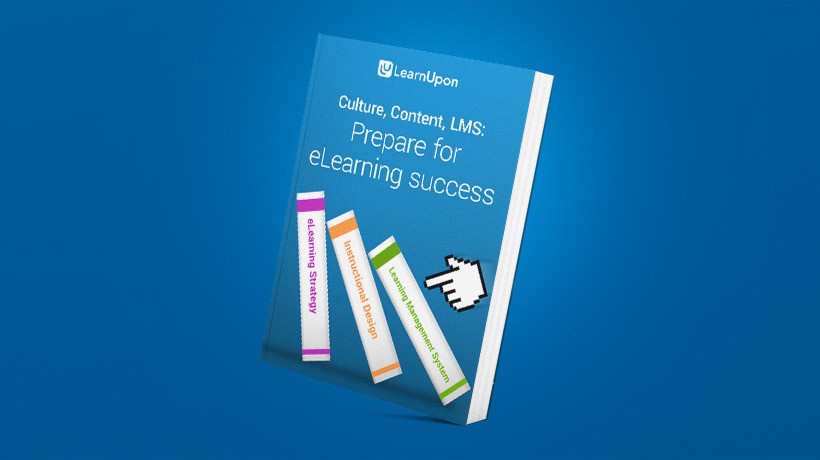Examining The Potential Of eLearning For Your Organization
The following is adapted from LearnUpon's first eBook Culture, Content, LMS: Prepare for eLearning success.
It's widely argued that digital technologies and the internet are changing the educational landscape on a global level and represent a paradigm shift for learners, educators, and organizations. eLearning now represents a growing and important component of training provisions in all types of organizations. While it can be argued that the impact of future eLearning trends are difficult to measure as an exact science, exploring the potential of eLearning programs and the greater use of technology in an organization can act as an important bridging process between the traditional role of education and the somewhat undefined future.
There are multiple definitions of eLearning in use. eLearning can be described as “an all encompassing term generally used to refer to computer enhanced learning”. It may include the use of web-based teaching materials, wikis, CD-ROMS, email, blogs, as well as the use of multimedia (text, audio, video, animation, still images, and interactivity). While this definition can mean many things to many people, it's important to note that eLearning is primarily concerned with the educational uses of technology, with education outweighing technology. The technology should always be a vehicle to give access to and enable the experience of educational materials rather than a limitation of that process.
Access The Benefits Of eLearning
This changing educational landscape brings its benefits including cost savings, more efficient processes, standardization of course content, and 24/7 access to learning, among others. As a result, more and more organizations are asking themselves how they can introduce or expand on existing online learning efforts to avail of these benefits and maximize the potential of eLearning programs. Different companies will transition for different reasons. Some may be developing eLearning materials to pass onto their customer base. Many may be developing them for their own staff training. And others may be developing them as part of their immediate role (e.g. university or college lecturers).
All learners should be able to avail of such content across all devices they have at their disposal. Most modern and forward thinking Learning Management Systems employ a design which is responsive across desktops, laptops, tablets, and mobile phones. Thanks to modern development frameworks, the experience a learner encounters on each should be uniform. The screen real estate is adapted for the screen size to make it practical for the learner and compatible with the medium being used, with respect to video or text. With the removal of this previous barrier to learning, there is a reinforcement of the 24/7 access model mentioned above as the learner is no longer tied to a particular environment. Free from the shackles of a desk or classroom one can consume content, gain access to resources, and complete assessment anywhere.
Although eLearning may well be changing the educational landscape, the range and speed of the uptake and implementation in organizations varies enormously and is impacted by factors such as financial, infrastructural, cultural, and organizational readiness. If you are interested in this eBook, there’s a high probability that you and your organization are either considering transitioning to eLearning or expanding upon your existing eLearning initiatives. You may also be considering changing the format of existing online training materials into SCORM or Tin Can compliant course content for greater scalability. Whether you are well versed in such standards or completely new to them, the eBook serves as a useful resource.
About The eBook
We've written this eBook to give you an overview of the 3 key elements involved in transitioning to or expanding on current eLearning initiatives, and to demystify the process. There are several sections which are clearly detailed in the table of contents.
In summary, the key sections include the following:
- The importance of an organizational eLearning strategy.
- Instructional Design with a focus on the "reusable learning object".
- How to select the right Learning Management System for your organization.
The content of the eBook is fully researched and based on the scientific findings and opinions of industry experts. All resources are provided in the comprehensive reference list at the end. We've also included helpful links to websites that will give you access to helpful resources for your own course content development.
Download the full eBook here.









